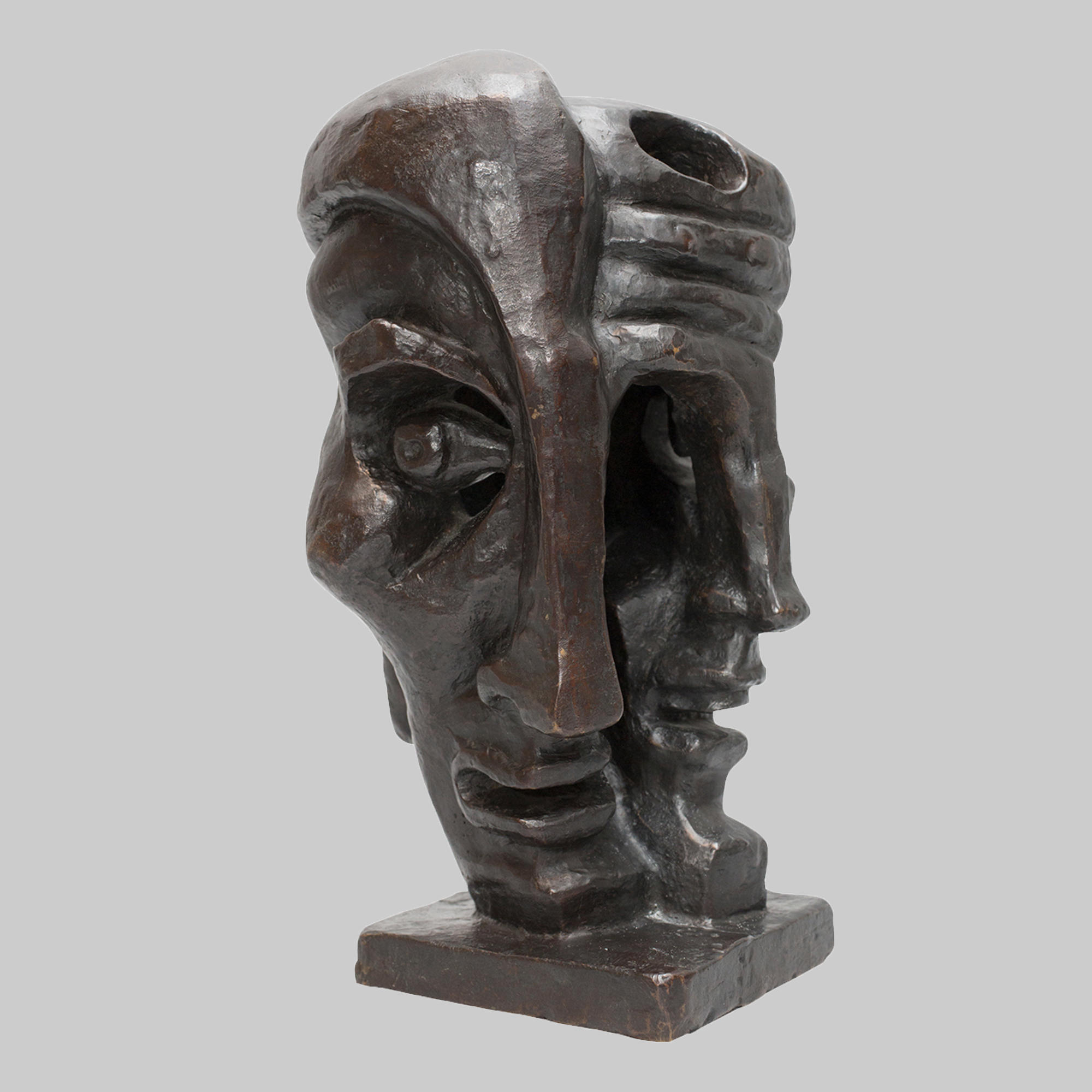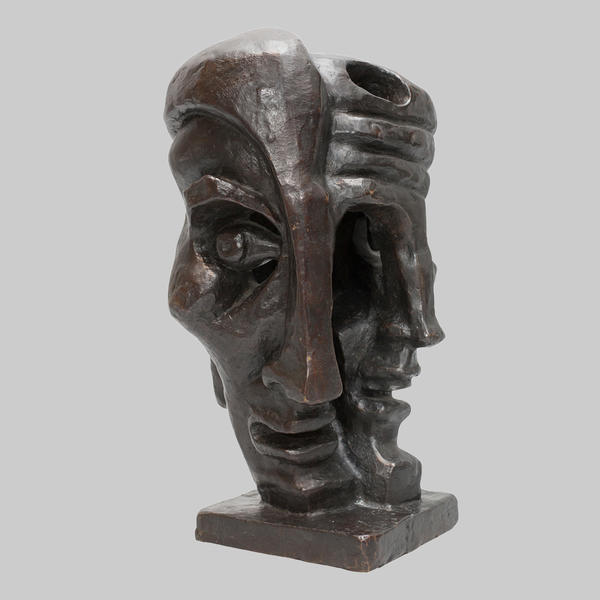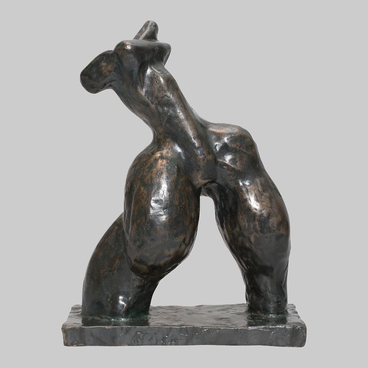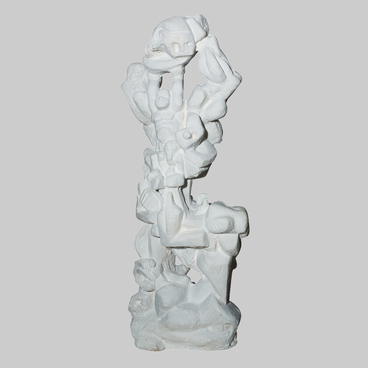Ernst Neizvestny’s philosophy was that man possesses both evil and good, that every one of us has a complex contradictory inner world, living in a constant state of controversy and conflict between negative and positive features. Many sculptors and artists, with a different degree of success, attempted to present this spiritual state in their works of art. Ernst Neizvestny concluded that the best way of depicting the fundamental nature of Man, was to create a dialogical sculpture.
How did Ernst Neizvestny understand dialogism? For the sculptor it was the possibility to convey eternal and incessant battle of the two opposite states and notions – anima and animus, good and evil, justice and injustice, oblique and sharp, hot and cold. It is quite impossible to express these ideas in a monologue. The “Two Faces” manages to achieve this goal.
An interesting story, that happened in 1962, relates to the creation of this sculpture. An exhibition dedicated to the 30th anniversary of the Artist’s Union Moscow department took place in Manege (Manezh) exhibition hall.
Avant-garde artists participated in the event. The exposition was visited by Nikita Khrushchev, who was harshly critical and offensive towards the works of the Elii Belutin studio, which constituted most of the artwork presented. The sculptures by Ernst Iosiphovich were among these works of art. Ernst temporarily displayed them at the exhibition on Taganka and then in Manege.
Unexpectedly Ernst Neizvestny found himself right amid the scandal. The sculptor later recollected that all the artists were lined up on the staircase in expectation of Khrushchev’s arrival. Nikita Sergeyevich entered the building escorted by his attendants; he was shouting loudly. As he saw the artists, he asked them who was in chief. Ilichev, who was showing the General Secretary round, pointed to Ernst Iosiphovich.
Khrushchev criticized him mercilessly, blaming the sculptor for guzzling the money of the people. Neizvestny tried to explain to the General Secretary that he did not really know all the intricacies of art, but it was useless. Finally, Khrushchev calmed down and held out his hand to the sculptor and said, “I admire people like you. There are both angel and devil inside you. Just bear in mind, if the devil triumphs, we will destroy you!”. It was this exchange that inspired the master to create “Two Faces”.
It is both symbolic and surprising that Ernst Neizvestny was the author of the black-and-white tombstone monument of Nikita Khrushchev.
How did Ernst Neizvestny understand dialogism? For the sculptor it was the possibility to convey eternal and incessant battle of the two opposite states and notions – anima and animus, good and evil, justice and injustice, oblique and sharp, hot and cold. It is quite impossible to express these ideas in a monologue. The “Two Faces” manages to achieve this goal.
An interesting story, that happened in 1962, relates to the creation of this sculpture. An exhibition dedicated to the 30th anniversary of the Artist’s Union Moscow department took place in Manege (Manezh) exhibition hall.
Avant-garde artists participated in the event. The exposition was visited by Nikita Khrushchev, who was harshly critical and offensive towards the works of the Elii Belutin studio, which constituted most of the artwork presented. The sculptures by Ernst Iosiphovich were among these works of art. Ernst temporarily displayed them at the exhibition on Taganka and then in Manege.
Unexpectedly Ernst Neizvestny found himself right amid the scandal. The sculptor later recollected that all the artists were lined up on the staircase in expectation of Khrushchev’s arrival. Nikita Sergeyevich entered the building escorted by his attendants; he was shouting loudly. As he saw the artists, he asked them who was in chief. Ilichev, who was showing the General Secretary round, pointed to Ernst Iosiphovich.
Khrushchev criticized him mercilessly, blaming the sculptor for guzzling the money of the people. Neizvestny tried to explain to the General Secretary that he did not really know all the intricacies of art, but it was useless. Finally, Khrushchev calmed down and held out his hand to the sculptor and said, “I admire people like you. There are both angel and devil inside you. Just bear in mind, if the devil triumphs, we will destroy you!”. It was this exchange that inspired the master to create “Two Faces”.
It is both symbolic and surprising that Ernst Neizvestny was the author of the black-and-white tombstone monument of Nikita Khrushchev.




